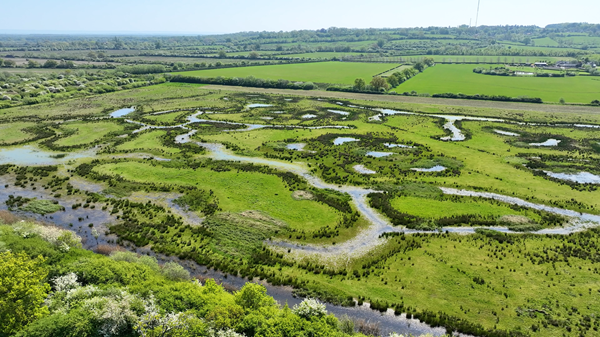Rare bird species will benefit from a new extension to the RSPB’s Otmoor nature reserve.
Published: Wednesday, 5th November 2025

The works are getting underway as part of an agreement between Cherwell District Council and the Royal Society for the Protection of Birds (RSPB) to set up the district’s second habitat bank; an area of land set aside and managed to help with nature recovery.
The 21-hectare site will be managed by the RSPB, drawing on their expertise and existing presence in Otmoor, in the south of the district. Rare and at-risk wading birds like lapwing, redshank, curlew and snipe are among the species being targeted for support. At the same time, the works will also increase the presence of ecologically valuable plant and invertebrate species.
Councillor Jean Conway, Portfolio Holder for Planning and Development Management, said: “Otmoor is a real treasure when it comes to wetland habitats and sustaining populations of some of the UK’s most beautiful wader species. With their unrivalled knowledge and years of experience at Otmoor, the RSPB are the perfect partner to help us bring forward this new habitat bank.
“As the planning authority, we are proud to be acting swiftly on new legislation governing Biodiversity Net Gain: developers are now required to pay for nature restoration, and by setting up dedicated sites like these, we can make sure that the benefits of that investment are felt in our local area.”
James Robinson, the RSPB’s Chief Operating Officer, said: "We’re delighted to be launching our first Biodiversity Net Gain site at RSPB Otmoor, a haven for wildlife in the heart of Oxfordshire. Otmoor is one of the largest inland wetlands in the country, providing a crucial habitat for a variety of important species, such as lapwings, redshanks, and curlews.
“Our approach is rooted in ecological science and long-term stewardship. The habitats we create and enhance will be managed well beyond the 30-year requirement, delivering lasting benefits for wildlife, the local community, and the climate."

Adam Charlton (RSPB-Images)
Works are underway transforming the former agricultural site into a floodplain grazing marsh – a type of habitat identified by the government as a priority for wildlife conservation.
Wetland features known as scrapes and footdrains will be created in parts of the bank, and other areas will be reseeded using seeds from the adjacent Otmoor Site of Special Scientific Interest.
Habitat banks allow nature restoration to be realised at scale, joining up ecosystems and making them more resilient.
Under government planning rules introduced last year, developers must enhance biodiversity by 10 per cent or more when building new homes or infrastructure. This is known as Biodiversity Net Gain, meaning that nature is left in a better state than before the building took place.
Where it is not possible to achieve this on the development site itself, developers can fund habitat creation elsewhere.
At present, developers would have to purchase biodiversity units outside the district to meet these obligations. But the development of habitat banks at Ells Farm near Bloxham and at the RSPB site in Otmoor means that the benefits of this investment will be realised locally.
For local landowners, setting up a habitat bank is an opportunity to increase the biodiversity of their land whilst also providing a reliable, additional source of income.
Interested landowners can contact the council to find out more by emailing ecology@cherwell-dc.gov.uk.

